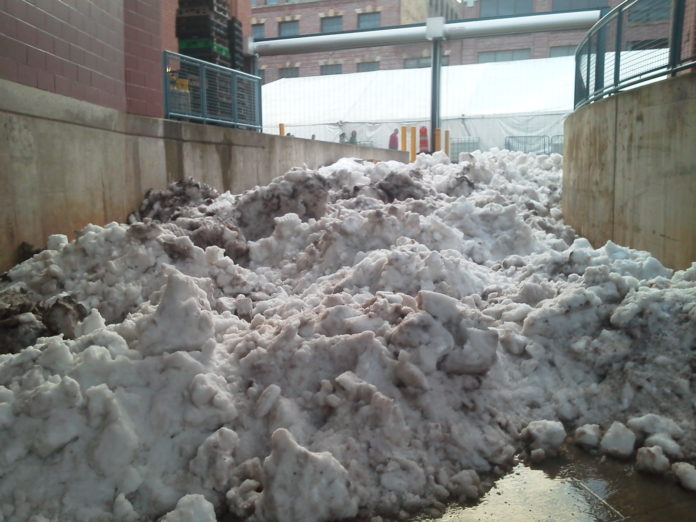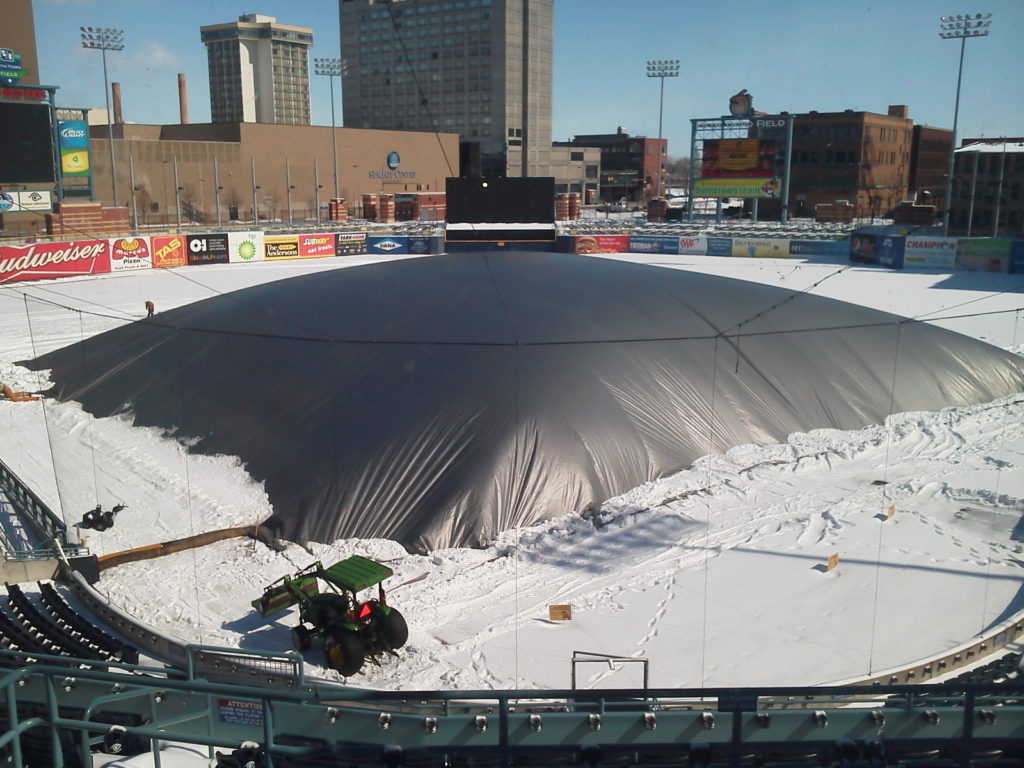
Jake Tyler’s job is to see to it the Mud Hens aren’t, strictly, muddy.
Add his job to the list of those made harder by the winter nobody’s sorry to see gone.
Making sure the “Field” part of Fifth Third Field is ready for the Mud Hens’ home opener is generally a laidback job — aerate the soil, add a layer of sand, spread fertilizer on the grassy parts, mow it a couple times.
Add up to 16 inches of snow and ice, though …
“Normally we’ve got four weeks to get two weeks [worth of] work done,” Tyler said, laughing. “Now we had three weeks to get a month and a half worth of work done.”
Normally, snow protects the grass and ground from the worst of the winter cold, then melts in the spring, helping to thaw and warm the ground.
“Definitely not a normal year,” said Tyler, whose official job title is sports turf manager for the Mud Hens. “Depends on how you define normal, I guess.”
The ground froze, and froze deep. Snow and ice piled up — about 16 inches in the part of the field that, until about April when the sun traces a high-enough arc in the sky, gets no direct sunlight at all.
Even on the day before spring officially started, parts of the ballpark’s loading dock was piled deep with snow — snow that had to be shoveled from the field by hand, by a crew of eight men, because the deep-frozen ground was too fragile to use heavy equipment.
And the limited sunlight and near-zero evening temperatures meant there were only a few hours each day to get that work done without causing more damage to the ground.
“It took some ingenuity” to work around that, Tyler said.
That ingenuity included putting one of the infield tarps to unexpected use as a hothouse of sorts, to melt the 16 inches of snow and ice shielded by the stadium walls from the low winter sun.
The tarp was spread atop the ice, its edges weighted down with piled-on snow. Then two industrial-sized space heaters were set up at either end, their exhaust hoses stuck under the edges. The two heaters put out a total of a 1 million British Thermal Unit (BTU), Tyler said. (Just to compare, the space heater that’s been under your desk all winter might be about 5,000 BTU, tops.)
Those two heaters ran three days straight, keeping the temperature under the tarp in the 70s even as the outside temperature passed zero on the way down, before the ice and snow melted, Tyler said.
All that got Tyler and his crew — which includes full-time assistant Cory Myers and, in a “normal” year, two other crewmen — to the point at which they could think about doing the things they usually do to prepare the field: tilling to aerate the clay parts, fertilizer on the grass, the first pass with the mowers.
It’s about more than having a field that looks good, Tyler said. There are plenty of stories about how dirt that’s not firm enough can cause a player to lose his footing, or cause a ball to take a bad hop and injure someone.
“Our goal is to have a safe field for the players. We don’t want to cause any injuries,” he said.
And then there’s the intangible effect of walking into a baseball stadium, through the gates and up to the seats and catching that first glimpse of the playing field.
For the fans, Tyler said, “walking out to that field and seeing the green grass makes it feel like spring even if it’s not.”























